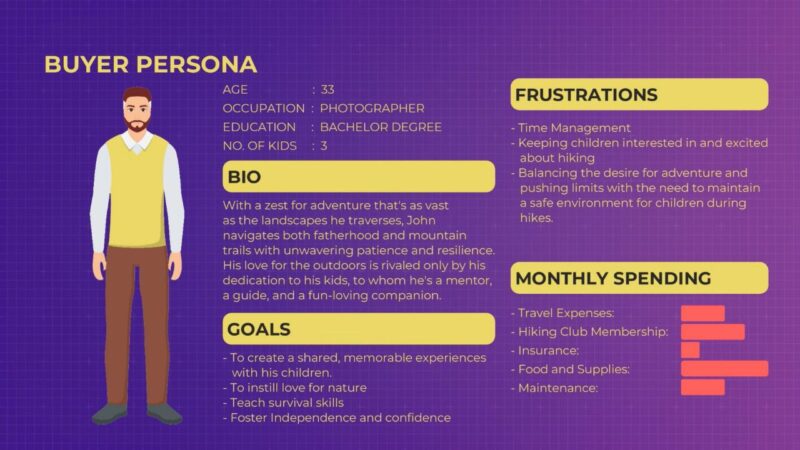In the ever-evolving world of SEO, understanding your visitors’ search terms is more critical than ever. This tutorial by Rank Math focuses on how to decode these search terms to adapt and thrive in the new search environment. It’s about understanding the customer journey, identifying the different types of search intent, and aligning them with your “SEO strategy”. This knowledge is crucial in boosting your revenue and turning visitors into customers.
Search Terms Evolution
- Understanding the Customer Journey
The customer journey is a concept that most marketers use to develop marketing strategies. It describes the process of a person discovering your product, researching it, deciding to buy it, testing and experiencing the product, and finally becoming a loyal customer. - Identifying Search Intent
Search intent is the reason why someone is using certain “search terms”. There are four types of search intent:- Informational
The user is looking for information or knowledge. For example, “How does a WordPress SEO plugin work?”. - Commercial
The user is considering a purchase and comparing options. For example, “Rank Math vs Yoast”. - Transactional
The user intends to buy something. For example, “buy Rank Math Pro”. - Navigational
The user is trying to get to a specific site or page. For example, “Rank Math support”.

- Informational
- Aligning Search Intent with Your SEO Strategy
Each type of search intent corresponds to a stage in the customer journey and should be considered in your “SEO strategy”. For example, informational content addresses the awareness stage, commercial content addresses the consideration stage, and transactional content addresses the decision stage. - Adapting to the New Search Environment
With the advent of Google’s search generative experience and Microsoft Bing chat, the landscape of search has changed drastically. The tutorial explains how to adapt your “SEO strategy” to these changes and use them to your advantage.

- Creating Customer Personas
A customer persona is an imaginary profile that represents a segment of your target market. By creating multiple customer personas, you can identify the “search terms” they will be looking for.

- Creating Content Based on Search Intent and Customer Personas
The tutorial provides strategies for creating content that aligns with your customer personas’ search intent. This involves making smart guesses about what kind of “search terms” they will search for and how your product or service can solve their problems.
Old Strategy vs. New Strategy: The Evolution of SEO Strategy
The Old Way
In the past, keyword strategy was a bit like fishing with a wide net. You’d pick a keyword related to your business, like “camping tents,” and create content around it. The goal was to catch as many searches as possible. For example, if you were selling camping tents, you might have targeted keywords like “best camping tents” or “cheap camping tents”. The hope was that anyone searching for those terms would land on your website.
But here’s the catch: Not everyone searching for “best camping tents” is ready to buy one. Some might be looking for reviews, others might be comparing different types of tents, and some might just be browsing out of curiosity. By focusing solely on the keywords, you might have attracted a lot of visitors, but not necessarily the right ones.
The New Way
Fast forward to today, and keyword strategy has become more like spearfishing. Instead of casting a wide net, you’re aiming for a specific target. This is where understanding “search terms” and search intent comes in.
With the advent of Google’s search generative experience and Microsoft Bing chat, search engines have become much better at understanding why people are searching for certain terms. They can tell whether a user is looking to buy a product, seeking information, or comparing options.
So, instead of targeting a broad keyword like “camping tents,” you’d look at the customer journey and identify the specific terms that users are likely to use at each stage. For example:
- During the awareness stage, they might search for “how to choose a camping tent.”
- In the consideration stage, they might look up “best camping tents for families.”
- And in the decision stage, they might search for “buy Coleman Montana 8-person tent online.”
By aligning your content with these specific search intents, you can attract the right visitors at the right time, leading to higher engagement and conversion rates.
Why you Adapt Your SEO Strategy
Understanding search intent and aligning it with your “SEO strategy” is crucial in the new search environment. It allows you to create content that directly addresses your visitors’ needs, leading to higher engagement and conversion rates. Moreover, it helps you stay ahead of the curve as search engines continue to evolve. By following this tutorial, you can ensure that your website is optimized for the future of search.
The Impact of AI on Search
Artificial Intelligence (AI) has revolutionized the way search engines operate. With the advent of Google’s search generative experience and Microsoft Bing chat, search engines can now handle more complex queries and provide more accurate answers. This section discusses the impact of AI on search and how you can leverage it to improve your SEO strategy.
Common Issues
- Not Understanding the Different Types of Search Intent
It’s crucial to understand the differences between informational, commercial, transactional, and navigational search intent. Each type corresponds to a different stage in the customer journey and requires a different content strategy. - Not Aligning Content with Search Intent
If your content doesn’t align with your visitors’ search intent, they’re likely to leave your website. Make sure your content directly addresses their needs and provides value. - Not Adapting to the New Search Environment
With the advent of Google’s search generative experience and Microsoft Bing chat, the landscape of search has changed drastically. It’s important to adapt to these changes and use them to your advantage.

